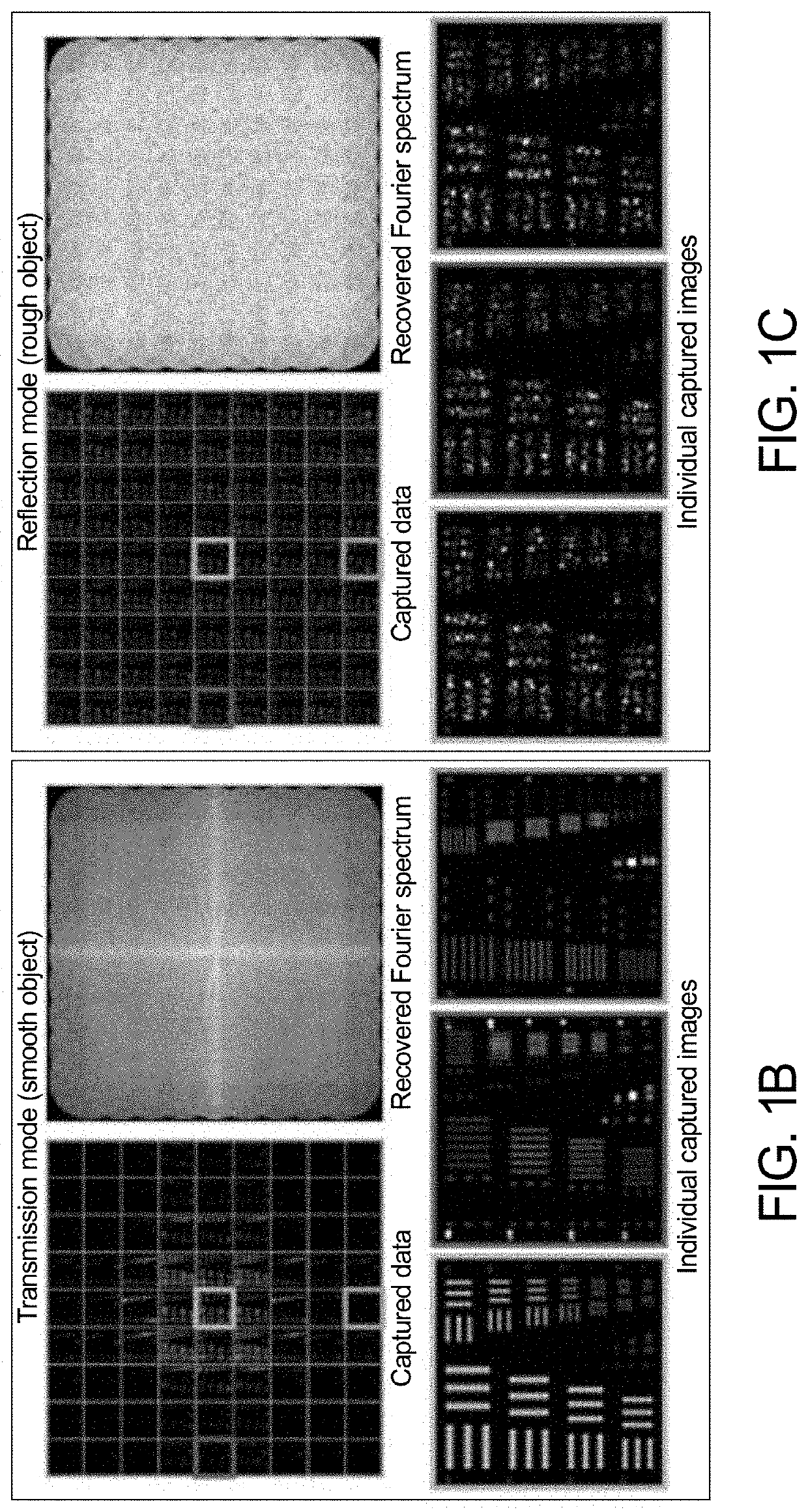Synthetic Apertures for Long-Range, Sub-Diffraction Limited Visible Imaging Using Fourier Ptychography
- Summary
- Abstract
- Description
- Claims
- Application Information
AI Technical Summary
Benefits of technology
Problems solved by technology
Method used
Image
Examples
Embodiment Construction
[0031]FIG. 2A is a diagram illustrating a synthetic aperture for visible imaging (SAVI) technique 100. In a first step 102, a coherent source 104, e.g. a laser, illuminates a distant target 106 and the reflected signal is captured by a camera system 108 in intensity images 110. The camera system 108 is translated to capture all of the light that would enter the desired synthetic aperture in a second step 112. Unlike SAR, phase information cannot be recorded for visible light. High-resolution image reconstruction therefore necessitates post-capture computational phase recovery in a third step 114.
[0032]FIG. 2B illustrates a further diagram of SAVI 200 in three steps. In the first step 202, a diffuse object 204 is illuminated with a coherent source 206 and overlapping images 208 are captured. Each image is low-resolution and suffers from speckle. In step 210, missing phase information is recovered computationally, which requires redundancy between captured intensity images. In step 21...
PUM
 Login to View More
Login to View More Abstract
Description
Claims
Application Information
 Login to View More
Login to View More - Generate Ideas
- Intellectual Property
- Life Sciences
- Materials
- Tech Scout
- Unparalleled Data Quality
- Higher Quality Content
- 60% Fewer Hallucinations
Browse by: Latest US Patents, China's latest patents, Technical Efficacy Thesaurus, Application Domain, Technology Topic, Popular Technical Reports.
© 2025 PatSnap. All rights reserved.Legal|Privacy policy|Modern Slavery Act Transparency Statement|Sitemap|About US| Contact US: help@patsnap.com



